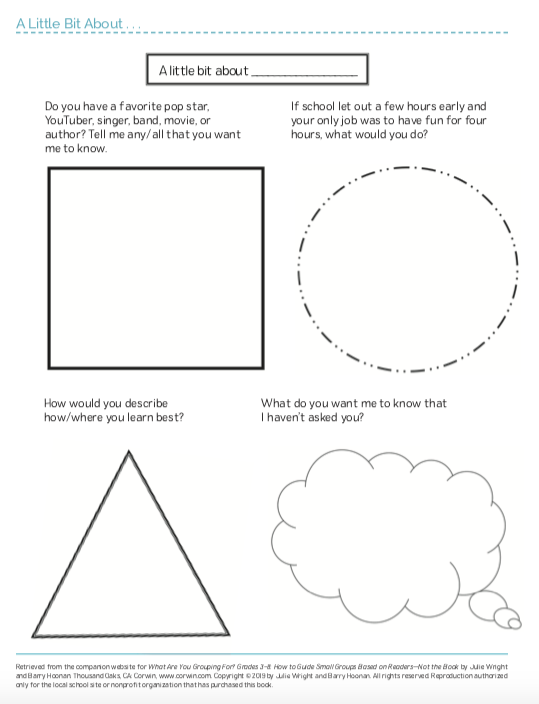Reading Surveys: A Go-To Data Source for Creating a Focus for Instruction
It’s not unusual for teachers to survey students about their reading interests and habits at the beginning of the year. Anytime we ask kiddos their thoughts and ideas about important topics, their answers become a go-to data source for creating a focus for instruction—both in the short term and often across several weeks.
Take a look at this Reading Interest Survey and think about these questions:
What questions stand out to you? How do you anticipate you’d use the data you collect from those questions?
What questions would you revise or eliminate?
TRY THIS
Give students a copy of the Reading Interest Survey template.
Ahead of time, fill out a survey about yourself. To lift the learning across the classroom, share a few ideas from your survey with the whole class. This gives students an opportunity to get to know you AND serves as a model for how the survey answers can be shared.
Give students 10-15 minutes to jot down their answers.
Break students into pairs or small groups of 3 or 4 and give them an opportunity to share their survey answers with others.
As students share, listen in [or kidwatch] so that you get to know students as they are getting to know their peers.
Collect student surveys.
LOOKING ACROSS THE DATA
As you look across student survey results, here are some ways you might consider using the data to guide your planning. You could:
Think about who likes to read with a partner and/or who likes to talk to others about what they read. This information could help you create Reading Thinking Partners.
Take stock in what genres/types of reading materials students like best. This is a great opportunity to begin curating texts that students might want to read.
Give students an opportunity to book talk [shout out or talk about] their favorite book with others by inviting them to share with the whole class or in small groups.
Look for patterns and create a list of short text types that students like to read. Check out Chapter 2 if you want to think about launching small groups focused on students’ interests.
Pay close attention to what students write [or don’t write] for question #11.
Save a copy of students’ surveys. Across the year, re-visit this initial survey and ask students to reflect on their responses. Nudge: Put a note on your calendar to re-survey students a few months into the school year. Students’ interests, passion, and inquiries change across time.














